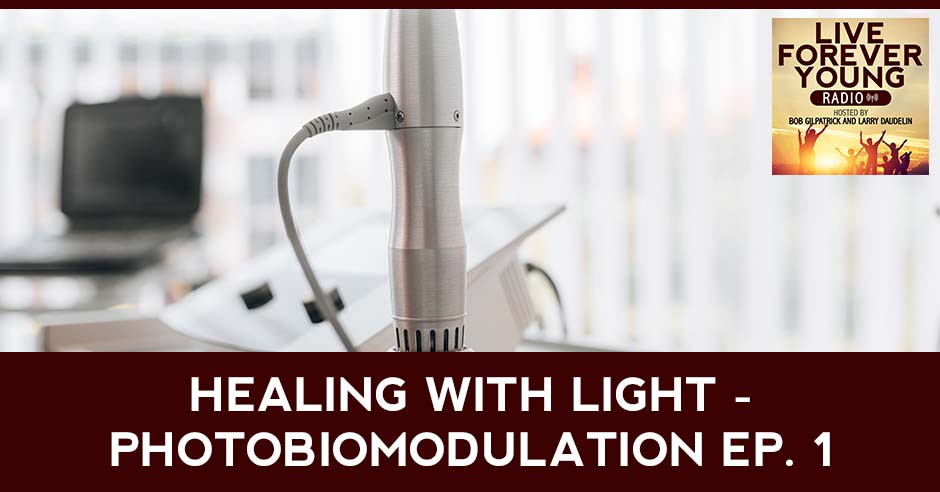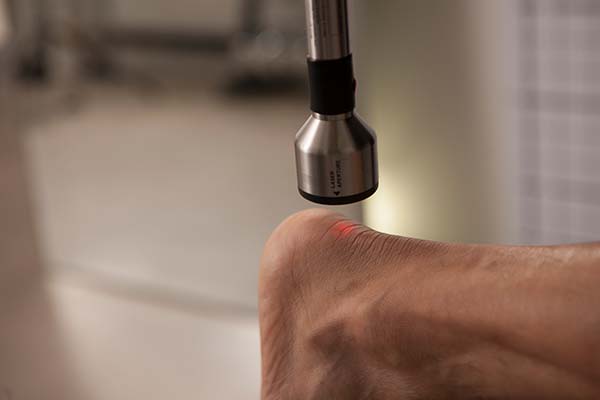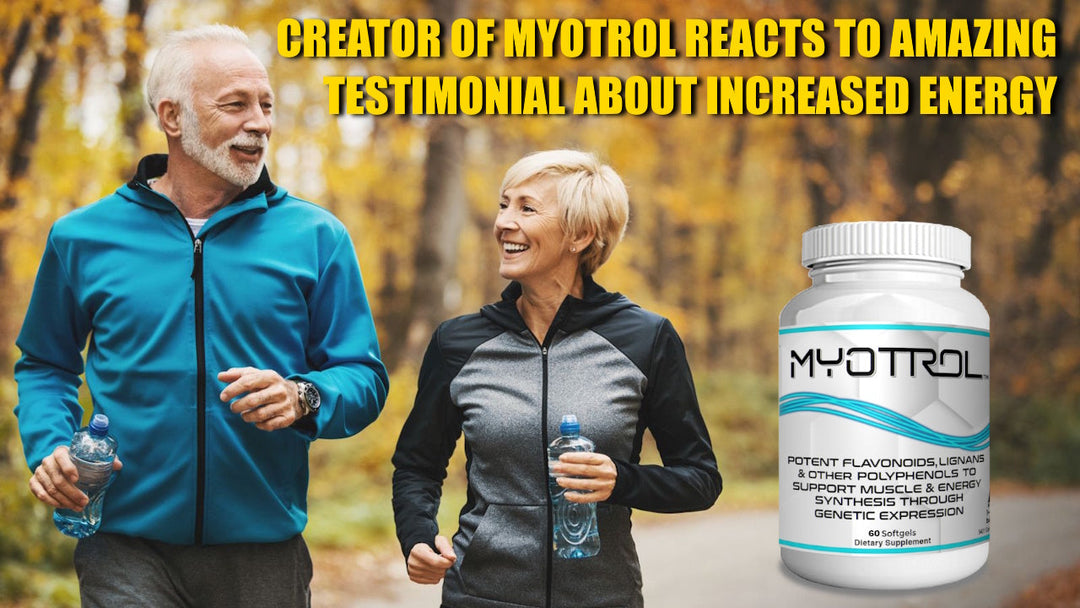Healing with Light Ep. 1 - Photobiomodulation Therapy Explained

Did you know Smallpox was cured with light in 1903!? Humans have always relied on light to live but haven’t had the technology to receive all of its amazing benefits, until now! Today on the show, we will be talking to Photobiomodulation expert Peter Forhan, the Founder of a brand-new light therapy company called JustLight. In our first of three episodes, Peter explains exactly what Photobiomodulation is, its history, and the amazing health benefits new light technology has been able to unlock. So sit back, relax, and get ready to live forever young.
---
Watch the Podcast Here:
Healing With Light - Photobiomodulation Ep. 1
Featuring Peter Forhan Of JustLight.com
Did you know smallpox was cured with light in 1903? Humans have always relied on light to live, but haven't had the technology to receive all of its amazing benefits until now. On the show, we will be talking to photobiomodulation expert, Peter Forhan, Founder of a brand-new light therapy company called JustLight. In our first of three episodes, Peter will explain exactly what photobiomodulation is, the history of it, and the amazing health benefits new light technology has been able to unlock. Sit back, relax, and get ready to live forever young.---
We have a very special guest, Peter Forhan, who's the Founder and CEO of JustLight, which is a company that's built around incredible inventions in the field of photobiomodulation. Peter is going to explain to us all about this.
Welcome, Peter. Thank you so much for coming on. We're very excited to have you on as a guest.
Thank you for having me, Bob. It's a great honor to be here.
Peter, can you tell us a little bit about your background, your academic credentials, and then also how your career led you into the field of photobiomodulation?
I'll start and preface to say I'm a scientist obsessed with the biophysics of light. The last four years of my life had been very much dedicated to studying, learning, and applying the biophysics of light. I graduated from the University of Michigan in 2018 with a degree in Materials Engineering and Material Science, and a focus on the quantum side of the science, learning about the applications. The physics of light in the university was part of my education.
"At the end of the day, if the cell is injured, it needs the energy to make those repairs."
About nine months after I graduated from the University of Michigan, I went through the entrepreneurial journey, starting with becoming extremely frustrated by how laundry was completed and how I had to use all these water and chemicals to clean clothing that was barely dirty. I thought, “Why can't I blast my clothing with very high-powered UV light? Won't that kill the germs? Won’t that deodorize the clothing?”
That kick-started a three and a half year journey that brings us now of asking these questions about how light can be used, learning deeply about them, and then applying them through my own personal life, and then all the way through starting a company, and applying them through products.
You ended up now in the field of photobiomodulation, which is a very exciting field of science and healthcare. A lot of very well-known healthcare gurus have been talking a lot about how excited they are with the new advancements. We'll get into the incredible advancements that you and your company have made later on. First, can you give us the definition? Photobiomodulation is long word. What does it mean in simpler terms?
The simplest term is the medicinal use of light to heal ourselves. Typically, when we'll talk about photobiomodulation, we'll be discussing red and infrared wavelengths of light or color. Red, of course, being visible red light. Infrared being what we feel as heat and is invisible to our eyes. In a simple term, as our body absorbed this energy, we have the capacity to synthesize energy from these photons, to use these photons to induce circulatory flow, and to use these photons to directly catalyze photochemical reactions, including the reduction of inflammation. In a sentence, we synthesize energy from light, and photobiomodulation is the medicinal practice of using red and infrared light to heal ourselves.
In terms of the different things that you've seen from the research and from the evidence from your own studies, what are some of the things that are most important for people to know about this infrared and near-infrared light? What does it have the most effect on? I know from seeing your website, Alzheimer's disease is one. What are some of the other things people should know about?
Photobiomodulation: Photobiomodulation is the medicinal practice of using red and infrared light to heal ourselves.
I'll take that question in two ways. The first is degenerative disease, holistically speaking, is what photobiomodulation is great on. Things that are marked by chronic inflammation and chronic low energy levels. If you look at America right now, chronic degenerative diseases are mapping out 8 of the top 10 killers of humans across the country.
What's extremely interesting about photobiomodulation as a therapeutic technique is the way that we view as a company is less this precision therapy, which of course it is, but it's more as if every human being were only receiving 5% of your daily water intake every day. If we were all walking around chronically dehydrated, we would have vast needless degenerative diseases.
If you simply drink 100% of your daily water every day, you would feel much better. You would look much better. Your energy levels would improve. First and foremost, what we're doing is we're explaining the incredible human capacity to synthesize energy from light, and then we're making photobiomodulation accessible as a technology to access those benefits. Whether you have a brain that is chronically low energy and has chronically low blood flow, that then results in the downstream diagnosis of Alzheimer's and dementia. Or you have a foot that doesn't have proper blood flow or proper energy that results in a downstream impact of neuropathy or then requiring amputation. Those processes are much more marked by physics of our body, and less so upon the biological or genetic characteristics of the individual.
There's a lot of science that we apply in our healthcare system as if humans have transcended away from needing to follow the basic biological laws of nature. Whereas if we reclassify what we're describing, Alzheimer's disease versus the brain is withering, the brain needs blood flow, the brain needs ATP production, the brain needs light exposure to both catalyze and directly produce these effects.
"What's incredible about photobiomodulation, much like water, is that it doesn't have negative side effects."
We introduce light back into the environment, into your daily diet. It's like introducing water back into the diet of somebody who's chronically dehydrated. In a sentence, we are applying the principle of light as a human required nutrient to a society that is chronically sunlight deprived because we do not reckon with the fact that our cells are photosynthetic. We directly synthesize energy from photons.
Any adult onset type disease that is related to poor circulation or poor production of ATP is going to be mitigated if people get the proper exposure to light, which almost all diseases fall into that category. Whether someone has trouble with their circulatory system, including heart disease, a person who's at risk for a stroke or even cancer or Alzheimer's or diabetes, all of these can be benefited by the proper exposure to light.
All of the diseases you named can have a diverse amount of negatives that are causing them to appear in the body. Those aren't directly as a result of not getting enough sunlight exposure, some can be, but all of them can be improved through red and infrared light exposure. At the end of the day, if the cell is injured, it needs energy to make those repairs. The cell knows it is injured. The cell knows its mitochondria are dying. It knows that it needs more blood flow, but it simply doesn't have the tools to do so.
It’s the same way, if we apply the analogy again of if all of those diseases were marked by chronic dehydration, which of course many are as well, which is a whole other topic, if we didn't know that we’re all chronically dehydrated, we'd go to the doctor. We talk about the list of our symptoms. We have low energy, brain fog, we have poor circulation, all of these things, but then be reduced into individual diagnoses and will be applied a label. If you just put the water back into the diet, you see a systemic improvement.
Photobiomodulation: We are applying the principle of light as a human-required nutrient to a chronically sunlight-deprived society because we do not recognize that our cells are photosynthetic. We directly synthesize energy from photons.
What's really incredible about photobiomodulation, much like water, is that it doesn't have negative side effects. This isn't a drug that we're designing and introducing into its system. This is us taking the output of sunlight, reducing it down to just the wavelengths that don't cause negative harm, so removing UV light and blue light, which have their own positives, but overexposure can cause burns. Just delivering that sunlight at targeted parts of the body so that we can synthesize energy from it. Whether it's arthritis, diabetes, anxiety, Alzheimer's, depression, diabetic neuropathy, even wrinkles and hair growth, things that are more superficial, all of the processes need proper ATP levels in the cell. They need proper blood flow. Oftentimes, they're marked by proper inflammation.
One of the biggest things that I harp on, both in the company and in my personal life, is we don't recognize the electrical health of the human organism. We've got a lot of measures for the chemical health or the mineral balance, or the aesthetic health of the human, but we don't discuss the fact that we're a massive water battery. If our massive water battery that connects all of our cells together lowers in voltage, then we just have chronic degenerative diseases developed. All of these are not just marked by low energy and high levels of inflammation. They're also marked by a breakdown in the cellular voltage itself.
Right now, we don't discuss cellular voltage in almost any capacity. That's really disappointing because it's a very important measure and a very important physical reality that we need to reckon with. The body is a massive water battery, and we need to keep it fully charged. If you're only getting a little bit of solar exposure every day, like many of us are, at best you're going to be operating on low power mode throughout every day. Like our phone when it goes to low power mode, it slows down. It limits external communications. Some apps don't work. When we're in low power mode, we slow down. We limit our external communications. Some parts of our body work less. As we get closer and closer to 1% battery, 2% battery, the phone starts to skip, apps start to crash. Every electrical system has this.
"The biggest amount of energy comes from the sun. Even food is a secondary source of sunlight energy."
As we get lower and lower in our water battery of our body, those similar effects happen in the body. We see organ failures. We see circulation being so poor, we have to amputate parts of our body. We see the brain not receiving enough blood flow, so of course it's going to wither and wilt and waste away, that we then of course see as chronic degenerative brain disease. Reckoning with the electrical requirements of our body is one of the things that I'm most passionate about. Photobiomodulation is one of the best modalities to simply increase your battery.
That's a great explanation. Peter, would you be so kind as to tell us a little bit about the history of photobiomodulation?
The history of photobiomodulation begins millions of years ago, as all terrestrial organisms were evolving under sunlight exposure, creating a homeostasis in our environment where we are extracting every little bit of energy from our environment that we can. The biggest amount of energy comes from the sun. Even food is a secondary source of sunlight energy when all is said and done.
On the human side, the Father of Medicine, Hippocrates, was actually one of the big first advocates of using sunlight as a medicinal tool. As humans started farming, moving in doors, and getting cut off from sunlight exposure, we also started having the first kind of forms of chronic degenerative diseases. What Hippocrates did is he had people come in and lay under sunbaths with filtered red or blue panes of glass that would then filter the sunlight to deliver a specific color to that individual.
Photobiomodulation: We don't discuss cellular voltage in almost any capacity, and that's disappointing because it's a very important measure and physical reality that we need to reckon with. The body is a massive water battery, and we must keep it fully charged.
We now know Hippocrates as the Father of Medicine. We take the Hippocratic Oath, and his teachings stay with us now. More so in modern time, when this next picked up again in a really big scientific method way was right at the turn of the 1800s to 1900s. A lot of cool science was going on at this time. One thing that was extremely bad at this time is that as we became industrialized, kids started developing chronic degenerative diseases, including things like rickets. We started having diseases of civilization. Right now, diseases of civilization in the US are rampant, and we know these by name.
In 1896, the Father of Phototherapy, my favorite scientist, Niels Finsen, began using filtered sunlight, red light therapy, to successfully cure smallpox. I do not say the word cure lightly. He took 152 patients with smallpox, and 151 had complete recoveries through red light therapy exposure. What was so incredible is this was filtering sunlight. This was even before we could produce this via a light bulb. He ended up winning a Nobel prize seven years later, not for his work with red light therapy, but for his work using UVC germicidal light to treat Lupus Vulgaris, but his work lives on now.
The Phototherapy that he wrote about and that he hypothesized about, about all the applications, we now call it photobiomodulation. It's under this umbrella of Phototherapy. What's incredible is now we have LEDs that can produce very specific outputs of wavelengths of light. It’s precision forms of sunlight. In the ‘60s, NASA found that astronauts who were using red light to help grow plants, because plants of course need light to grow, as all terrestrial life does, they started to find that their wounds were healing faster when they were exposed to light. This opened up, “Why is that the case?”
This was going at the same time as a wonderful Hungarian scientist was using a red light lasers on mice, and found that the red light on the mice where the laser was positioned was causing hair to sprout and hair to grow. He's looking at this saying, “What is happening? The red light is causing this effect.” What we find is that we've remembered and forgotten all of these ways of using light therapy, red light therapy, photobiomodulation throughout the millennia, and now finally, we're at the intersection of public understanding of the science, and the incredible advancements in LED technology to make the products that can last for a decade-plus accessible to everyone from a cost standpoint. What's so great now on the historical point of view is we've gotten from filtered light sunbaths with the properties, filtered light sunbaths with Niels Finsen in the turn of the century.
Now, LED devices that can be used in your home, at a medical clinic, at the hospital, that takes advantage of the best parts of all of these different modalities, and delivers it in an extremely precision way. We can give the best blend of light for an individual on a bio-individual’s capacity. Somebody with very dark skin needs a different blend and dose of light than somebody who's very light skin to treat the exact same condition. We can now optimize that process. We are in this incredible healthcare revolution as it pertains to photobiomodulation, now that we have precision tools to complete it.
That's a really great explanation. Also, we're now in the midst of a revolution because of the merger of the technology and the research studies.
---
Who knew you could get so many benefits from Light Therapy? That's the end of our first of three videos with photobiomodulation expert, Peter Forhan. Make sure to check out the second episode where we learn all about Peter's company, JustLight, and how he's been able to take this incredible Light Therapy technology and its benefits, and make them accessible for everyone. Thanks for reading.Important Links
About Peter Forhan
 Peter is an avid inventor; obsessed with the biological impacts of Light. His investigation into Light began in 2019 after graduating from the University of Michigan with a degree in Materials Engineering. Before the pandemic, Peter invented Halo, an ultraviolet hand sanitizer. At the onset of COVID-19, he quickly scaled the invention into a company. Through a deliberate and recreational review of clinical reviews, Peter stumbled across an old discovery that changed his life. Sunlight is a physiological requirement for human cells and modern humans are Chronically Sunlight Deprived. Today, Peter is committed to building the vision of Niels Finsen; Phototherapy access in every home. “Nevertheless, I believe implicitly that in the future use will be made of this new therapeutic agent [Light], and the proof experiment once made, it will be easy to carry it out practically under the form of Light Baths; and lastly, to determine whether they are to be blue, violet, or red, the variations in their strength and duration, and whether natural or artificial.” - Finsen, Phototherapy, 1896
Peter is an avid inventor; obsessed with the biological impacts of Light. His investigation into Light began in 2019 after graduating from the University of Michigan with a degree in Materials Engineering. Before the pandemic, Peter invented Halo, an ultraviolet hand sanitizer. At the onset of COVID-19, he quickly scaled the invention into a company. Through a deliberate and recreational review of clinical reviews, Peter stumbled across an old discovery that changed his life. Sunlight is a physiological requirement for human cells and modern humans are Chronically Sunlight Deprived. Today, Peter is committed to building the vision of Niels Finsen; Phototherapy access in every home. “Nevertheless, I believe implicitly that in the future use will be made of this new therapeutic agent [Light], and the proof experiment once made, it will be easy to carry it out practically under the form of Light Baths; and lastly, to determine whether they are to be blue, violet, or red, the variations in their strength and duration, and whether natural or artificial.” - Finsen, Phototherapy, 1896








when arethese availanle and how much are they
Awesome are they up for sale?
I have a Beamer it also comes with infrared same concept?
Leave a comment